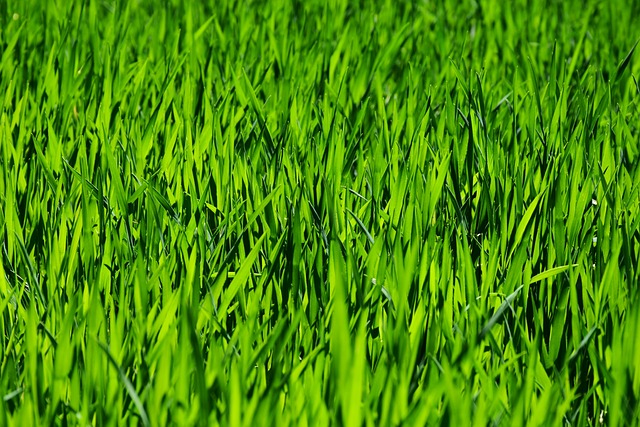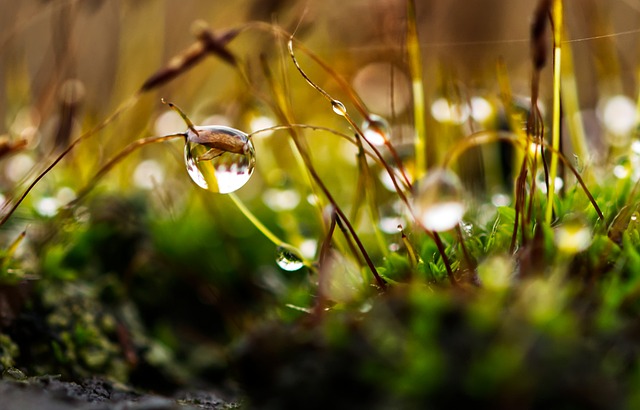Lawn Care and Landscaping are essential practices for maintaining a healthy, resilient lawn. Key activities include tailored mowing, aeration to relieve soil compaction, and strategic fertilization informed by soil tests to address nutrient deficiencies and pH imbalances. Integrated Pest Management (IPM) ensures sustainable control of pests and diseases, while efficient irrigation systems conserve water and support grass health. Regular inspections for lawn diseases and pests, along with timely treatments, are crucial. Soil assessments guide precise nutrient applications to promote root growth and support a healthy soil ecosystem, which benefits from biodiversity. Advanced soil testing methods, combined with precision agriculture techniques, ensure uniform nutrient distribution across the lawn. Expert fertilization schedules, particularly in fall for winter survival and spring after dormancy, enhance grass resilience and aesthetics, creating durable, beautiful outdoor spaces. These comprehensive Lawn Care and Landscaping strategies underpin the goal of maintaining healthy, lush turf in both residential and public areas, contributing to environmental sustainability and community well-being.
Embarking on the journey of mastering lawn care and landscaping opens a world where the artistry of greenery meets practical horticulture. This article serves as a comprehensive guide, delving into the pivotal aspects of maintaining a verdant, resilient turf and designing an appealing landscape that enhances curb appeal. We’ll explore the critical components of effective lawn care strategies, from assessing soil conditions to implementing advanced techniques in turf management for professional results. Understanding the role of fertilization, consistent irrigation, pest control, aeration, and overseeding will ensure a thriving lawn ecosystem. Moreover, we’ll navigate through landscaping design principles that emphasize harmonious plant selection, xeriscaping, mulching, and hardscape integration to create a year-round vibrant outdoor space. With insights into selective lawn care equipment, organic practices, and technology advancements like GPS-enabled machinery, this article is an essential read for both seasoned turf managers and enthusiastic amateurs looking to elevate their lawn and landscape maintenance to the next level.
- Essential Components of Effective Lawn Care Strategies
- – Assessing Soil Conditions for Optimal Nutrient Distribution
- – The Role of Fertilization and Its Impact on Grass Health
Essential Components of Effective Lawn Care Strategies

Effective lawn care strategies are multifaceted, encompassing a variety of practices that promote a healthy, resilient turf. Central to successful lawn management is understanding the specific grass species present and tailoring care to accommodate their particular needs. Consistent mowing at the appropriate height, which typically removes about one-third of the grass blade at any given time, encourages dense growth that naturally chokes out weeds. Aeration, a key component, alleviates soil compaction by creating spaces for air, water, and nutrients to reach the roots more efficiently, thereby enhancing root growth and overall turf health.
Proper fertilization, timed with seasonal demands, ensures that your lawn receives the necessary nutrients throughout the year. The choice of fertilizer should be based on soil testing to correct any deficiencies and balance the pH for optimal nutrient uptake. Integrated pest management (IPM) practices are essential to address both pests and diseases sustainably, minimizing reliance on chemical controls and selecting those that are environmentally responsible when necessary. Irrigation should be optimized to conserve water without compromising grass health, often through the use of smart irrigation systems that adjust to weather conditions. Lastly, regular inspections for lawn diseases and pests, along with prompt treatment when issues arise, are crucial for maintaining a lush, vibrant landscape. Landscaping considerations, such as strategic placement of plants, trees, and mulch, can also complement lawn care efforts by providing shade and reducing soil temperature extremes, which in turn supports the health of the turf.
– Assessing Soil Conditions for Optimal Nutrient Distribution

In the realm of lawn care and landscaping, assessing soil conditions is paramount for achieving optimal nutrient distribution. Professionals in turf management conduct detailed evaluations to determine the soil’s composition, pH levels, organic matter content, and moisture retention capabilities. This comprehensive analysis enables them to tailor fertilization strategies that address specific deficiencies or imbalances within the soil. By understanding the intricacies of the soil profile, turf managers can effectively manage nutrient application, ensuring that grass roots have access to the necessary elements for robust growth and resilience against environmental stressors. This targeted approach to lawn care and landscaping not only enhances the aesthetics of the turf but also contributes to its overall health and longevity.
Furthermore, advanced soil testing methods, combined with the application of precision agriculture techniques, allow for precise adjustments in nutrient delivery systems. These methods ensure that nutrients are evenly distributed across the lawn, which is critical for maintaining a uniform turf surface. The integration of these practices within the broader landscape design not only promotes a lush, green lawn but also supports biodiversity by creating habitats for beneficial microorganisms and insects that contribute to a healthy soil ecosystem. Thus, through careful planning and scientifically informed actions, lawn care and landscaping professionals can significantly improve the vitality of turf areas.
– The Role of Fertilization and Its Impact on Grass Health

Lawn care and landscaping professionals widely acknowledge that fertilization is a cornerstone practice for maintaining healthy, vibrant turf. The strategic application of fertilizers ensures that grass receives the necessary nutrients to thrive throughout the growing season. Essential macro-nutrients like nitrogen, phosphorus, and potassium are pivotal for leaf development, root growth, and overall plant health. A balanced N-P-K ratio in the fertilizer not only promotes green coloration but also enhances the grass’s resilience against environmental stresses, such as extreme temperatures and drought conditions.
Moreover, a well-thought-out fertilization schedule can address specific turf challenges by providing targeted nutrients. For instance, fall applications often contain higher phosphorus levels to encourage robust root systems that will sustain the lawn through the winter. Similarly, late winter or early spring fertilizations with a high nitrogen content are designed to kick-start growth and recovery from the dormant period. Landscaping experts emphasize the importance of soil testing to tailor fertilization programs to the unique needs of each lawn, optimizing nutrient uptake and minimizing the potential for nutrient runoff that could harm local waterways. By integrating fertilization as a key component of a comprehensive lawn care and landscaping program, professionals can significantly improve grass health, ensuring lush, resilient turf that stands up to the elements and serves as a beautiful and functional outdoor space for homes and public areas alike.
Effective turf management hinges on a deep understanding of lawn care practices, as detailed in this comprehensive guide. By focusing on essential components such as assessing soil conditions for optimal nutrient distribution and implementing a robust fertilization regimen, landscapers can significantly enhance grass health and overall lawn aesthetics. Landscaping professionals who master these strategies will excel in delivering lush, vibrant turf for diverse environments. Implementing these insights will not only elevate your lawn care game but also solidify your reputation as a connoisseur of impeccable landscapes.
